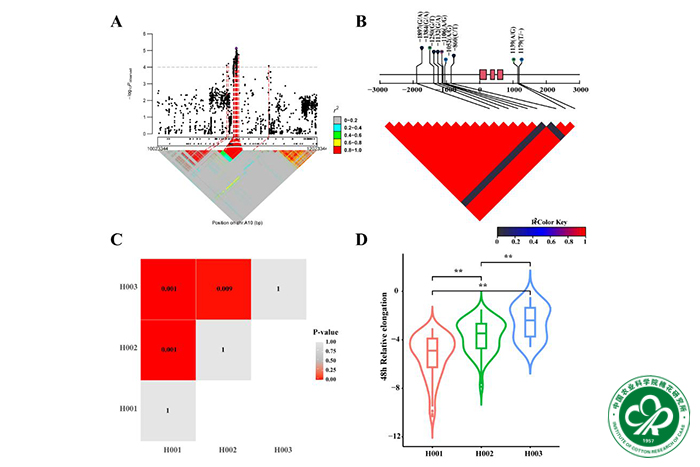- Location : Home» Newsroom
Gene Expression Modules during the Emergence Stage of Upland Cotton Under Low-Temperature Stress and Identification of the GhSPX9 Cold-Tolerance Gene
Recently, a research team led by researcher Ma Xiongfeng from the Cotton Research Institute of the Chinese Academy of Agricultural Sciences has identified a hub gene, GhSPX9, that positively regulates cold tolerance during the emergence stage of upland cotton. They have constructed a regulatory network for this gene, which can be used for screening and improving cold-tolerant germplasm. The related research findings were published in the well-known journal in the field of botany, Plant Physiology and Biochemistry (JCR Q1, IF=6.1), under the title "Gene Expression Modules during the Emergence Stage of Upland Cotton Under Low-Temperature Stress and Identification of the GhSPX9 Cold-Tolerance Gene."
Cotton originates from tropical and subtropical regions, and low temperatures are one of the main stress factors restricting its growth, particularly during the seedling stage. However, the mechanism of cold resistance is complex, and the research on gene expression modules under low temperatures during the seedling emergence stage of cotton remains unexplored, and identified vital cold-tolerant genes remain scarce. Here, we revealed the dynamic changes of differentially expressed genes during seed germination under cold stress through transcriptome analysis, with 5140 genes stably differentiating across more than five time points, among which 2826 genes are up-regulated, and 2314 genes are down-regulated. The weighted gene co-expression network analysis (WGCNA) of transcriptome profiles revealed three major cold-responsive modules and identified 98 essential node genes potentially involved in cold response. Genome-wide association analysis further confirmed that the hub gene GhSPX9 is crucial for cold tolerance. Virus-induced gene silencing in cotton demonstrated that GhSPX9 is a positive regulator of cold tolerance in cotton, with interference in its expression significantly enhancing sensitivity to cold stress in germination and seedlings. These results can be applied to identify cold tolerance loci and genes in cotton, promoting research into cold tolerance mechanisms.
This research was funded by the National Natural Science Foundation of China (32301807), the Youth Innovation of Chinese Academy of Agricultural Sciences (Y2023QC38), and the National Key Laboratory of Cotton Bio-breeding and Integrated Utilization Open Fund (CB2024C11).
https://doi.org/10.1016/j.plaphy.2024.109320
